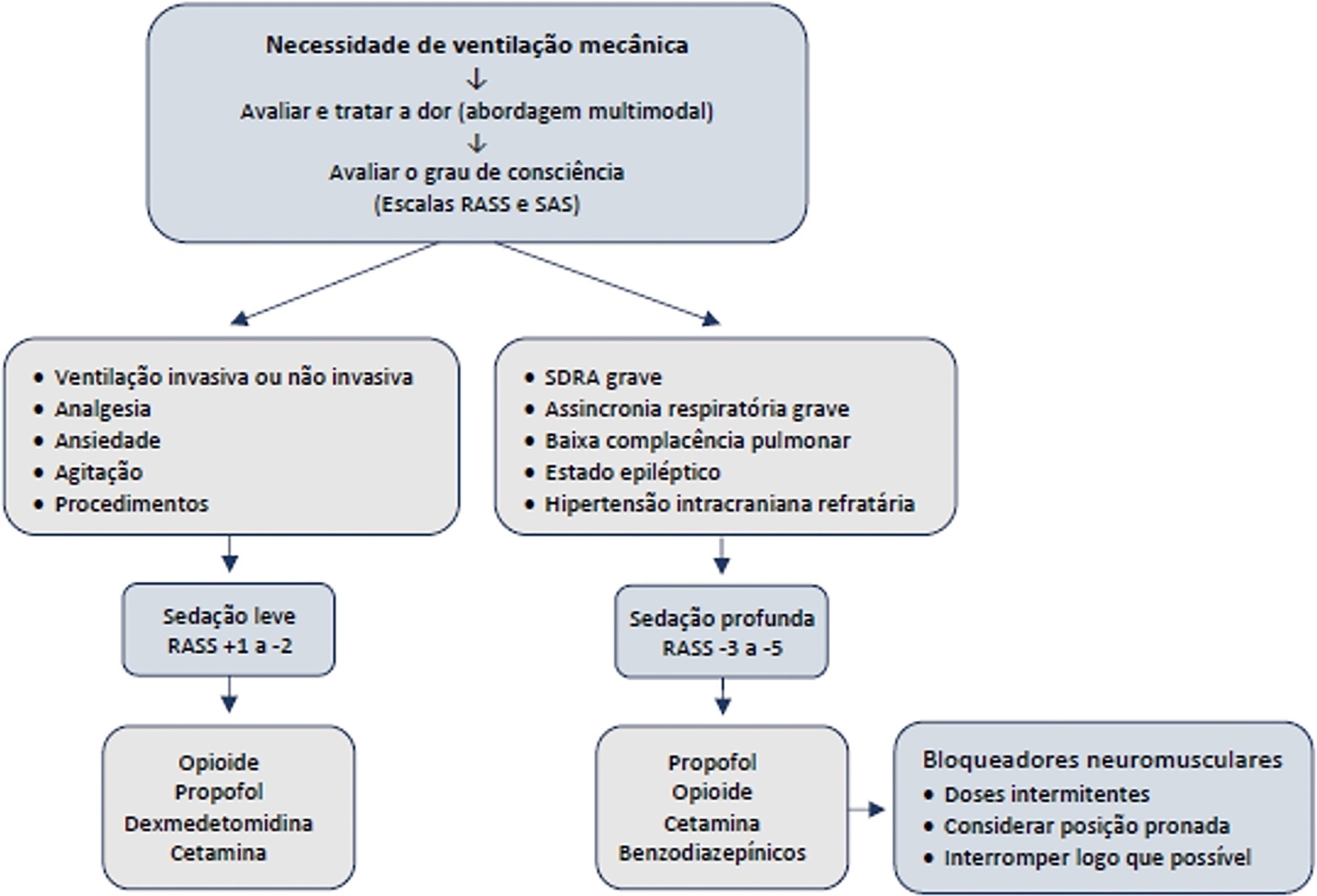
Pain, agitation and anxiety are frequently experienced by patients requiring intensive care unit (ICU) admission. These events are often associated with tracheal intubation, mechanical ventilation (MV) and bedside procedures. Sedatives and analgesics can be used to minimize distress, ensure comfort, and decrease the work of breathing to achieve better synchrony with the ventilator. A number of landmark studies have been published in the past decade, improving our understanding about the choice of sedatives and how their use affects the short- and long-term outcomes of critically ill patients.,) One of the key evidence-based concepts that emerged from observational studies and randomized controlled trials was a protocolized light sedation approach, which was included in recent guidelines. Light sedation is considered the ideal target for most mechanically ventilated patients, where a “calm, comfortable and collaborative” state can ensure synchronous ventilation with minimal pain and anxiety, coupled with cognitive preservation. Potential patient-centered benefits of light sedation also include the possibility of active cognitive and motor stimulation (including early mobilization interventions) as well as improved interaction with the health care team and family members.
[…]
Search
Search in:


Comments